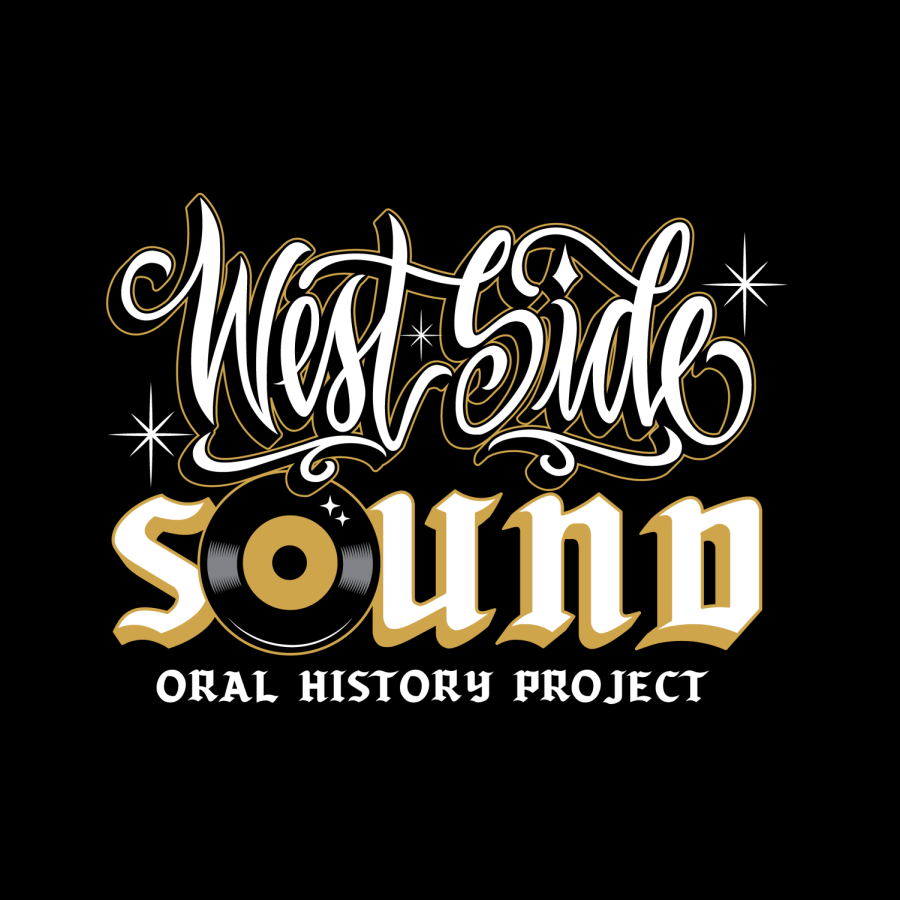The West Side Sound Oral History Project
UTSA faculty receive grant to preserve West Side Sound musical heritage
March 29, 2022
San Antonio is a melting pot rich in creativity, culture and pride. The city’s West Side is a tapestry of various musical movements. One of the movements that comes out of this community is the West Side Sound, a genre that incorporated Jazz, R&B and Tejano music. This sound was synonymous with San Antonio in the 1950s. Today, the West Side Sound Oral History Project encapsulates the ardent work of many hands, ears and minds who keep the genre alive.
Dr. Slyvia Mendoza and Dr. Gloria Vásquez Gonzáles are faculty from UTSA’s Department of Mexican American Studies. Also sitting in on the interview was Geremy Landin, a student at St. Mary’s University’s graduate school of public history. The trio is a small part of the larger umbrella of academics, students and citizens that make up the team behind the project.
Q: Can you speak to the broader need for the Westside Community Partnerships Initiative. What does it do for UTSA’s greater strategic plans?
Dr. Mendoza: “They are the ones offering up a couple of faculty seed grants. There’s about five or six faculty seed grants and we’re one of them. There is also a fellowship offered to a scholar to do work focusing specifically on the West Side. And so, the objectives of this specific grant through the Westside Community Partnerships Initiative is to make sure that we are fostering preliminary work that leads to larger research projects that lead to the community’s well being … we thought this was a perfect way for us to connect the university to the community … and to really focus on a genre of music that is a source of cultural pride for, specifically the West Side, but definitely all of San Antonio.”
Q: What does the team look like for the project? Does it cross different disciplines, city figures or students?
Dr. Mendoza: “As far as my academic research and training, I do draw from ethnic studies, pedagogy, and methodology, as well as feminist pedagogy and methodology. And that’s why the oral history part of this is so important, Geremy also has expertise in public history. Using oral history is very intentional because we know that oftentimes our communities are left out of historical records … even within that, women are often left out, queer folks are left out. Oral history provides a way for us to center specific voices that are left out. We’re learning about history through the people that experience it.”
Landin: “We really come from such varying backgrounds. I work for a county commissioner, you’ve got two professors from UTSA who are not just professors but also city leaders and advocates in their own right. We have a wide range of experiences and knowledge. One of the things I appreciate about historians … is now there are academics and there are community historians who understand the history of their culture and community.”
Q: What does the research look like for the project? Have you worked closely with UTSA Special Collections?
Dr. Mendoza: “We met with them recently to go over the guidelines of the oral history interviews. It’s pretty much understood that they will be housing them, that the oral history project for the West Side Sound has a home there. I know that is a part of [‘Special Collections’] very intentional work towards making sure there is more community and diverse representation in the archives … which archiving has a history of privilege. It was really great having that meeting with them and to discuss having community voices in there.”
Q: What do the cultural and historical roots of the West Side Sound look like?
Dr. Gonzáles: “It is a particular sound … It is uniquely San Antonio. But it is influenced by all these other genres. It is rock-n-roll, it is doo-wop, it is swamp pop. It [the West Side Sound] was done by teenagers … They went to these places, liked what they heard, then tried to reproduce it. It’s the way that we reproduced it. It’s a fusion of all these sounds, but it is done our way. Whatever we do, we can’t get away from our identity. It’s in there. It’s different things to different people … a lot of it is an emotional connection. ”
Q: Sometimes songs are cast onto political or civil rights movements. Were there songs or bands at the time that had certain political or social undertones to their music?
Dr. Mendoza: “I like your question because I think that is something that is coming up within the interviews. So in the interview with my mom, she talked a bit about how some of the musicians were ‘pushouts.’ They didn’t finish high school, they were pushed out for different reasons. A lot of them did end up joining the military. Also at the time, there were walk-outs happening in Texas and San Antonio as well. I’m hoping what will emerge in interviews … is finding those stories. What I do have hope for is that we will … find out what was happening around these musicians.”
Q: Can you speak to the community efforts that are going on outside of this project. Do cultural centers such as the Guadalupe Cultural Arts Center or Say Sí have a part to play in archiving this history?
Dr. Mendoza: “I think these cultural centers are definitely interested in wanting to be involved in the preservation of our contributions. I think the biggest issue is always funding … to be able to pay folks for their labor, to pay for training, to be able to house things. I think looking forward, we would have to apply to larger grants to sustain. We will have digital humanities training coming up that will introduce us to what it would mean to create an audio archive.”
Q: Would you say that in doing this research and working to resurface the past, there is some type of hope that influences the present? What do you hope the UTSA community and San Antonio as a whole take away from this project?
Dr. Gonzáles: “For me, it is just knowing that this is documented and that people have access to it. When they see it, hopefully, it’ll bring a memory or instill some pride. We could do this as Chicanos. We did this. We can do this. We have so much talent around us, especially in San Antonio. Artists, musicians, writers … It’s like a wealth, a pool of talent. We can go to college and study this stuff.”
Dr. Mendoza: “Archiving is super important to me now and I wish I would have known sooner to talk to my elders and save photos. With the project, I hope that folks become interested in that and that more opportunities become available to other oral history projects. So, I hope that as more folks become interested in sort of archiving and preservation, that also more sites and spaces open up.”
Landin: “To each one of the lives of the people we’ve interviewed, they know that their story is being told. If anybody listens to those — and we know they already have — then we’ve accomplished something, I think. We value so much tangible history over the things that we can’t touch … our non-tangible history is just as important as those tangible things you can feel. A lot of times, for so many years, people of color have had their documents intentionally hidden. Now we’re getting to a place where we have to save these things.”
The project is aiming for a community exhibit in the beginning of May. You can find Chris Galaviz’s work here. If you are interested, you can listen to the full conversation on the third episode of the podcast, “Meet.” The podcast is available on Spotify.








